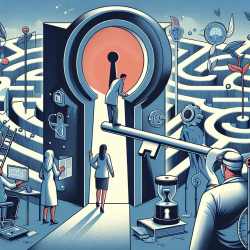Introduction
In the ever-evolving landscape of healthcare, unconventional environments have emerged as a response to hospital capacity pressures, particularly during the COVID-19 pandemic. These environments, which include repurposed spaces like hallways, tents, and hotels, have become temporary solutions for patients experiencing delayed discharges. A recent qualitative study sheds light on the experiences of individuals in these settings, offering insights that can be leveraged to improve patient care and outcomes.
Key Findings from the Study
The study identified three main themes regarding the implications of unconventional environments on patient care:
- Physical Safety: The physical setup of unconventional spaces often posed safety risks, such as inadequate space for equipment and mobility aids, which could lead to injury. However, open-concept designs allowed for better monitoring of patients.
- Staffing Models and Continuity of Care: Smaller, consistent care teams improved relational continuity and patient experiences. However, shared staffing models across multiple floors sometimes disrupted continuity of care.
- Team Interactions and Patient Care: Co-location of team members facilitated collaboration and improved patient care, though some environments lacked communal spaces for socialization and therapy.
Implications for Practitioners
For practitioners, the study highlights several actionable insights:
- Maximize patient safety by designing spaces that accommodate necessary equipment and allow for easy monitoring.
- Ensure consistent staffing to improve relational continuity and patient satisfaction.
- Facilitate team interactions by co-locating team members and providing spaces for collaboration and socialization.
By incorporating these insights, practitioners can enhance patient care in unconventional environments, ultimately leading to better outcomes.
Encouraging Further Research
While this study provides valuable insights, further research is needed to explore the long-term impacts of unconventional environments on patient outcomes and healthcare utilization. Practitioners are encouraged to contribute to this body of research, helping to refine strategies for optimizing patient care in these settings.
To read the original research paper, please follow this link: "I think we did the best that we could in the space:” A qualitative study exploring individuals’ experiences with three unconventional environments for patients with a delayed hospital discharge.










